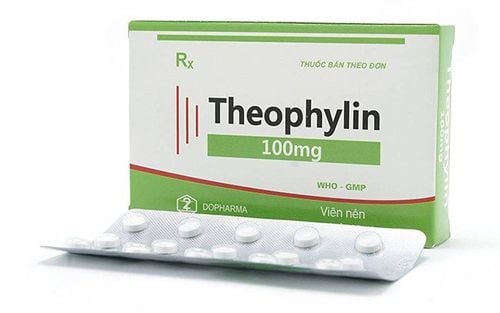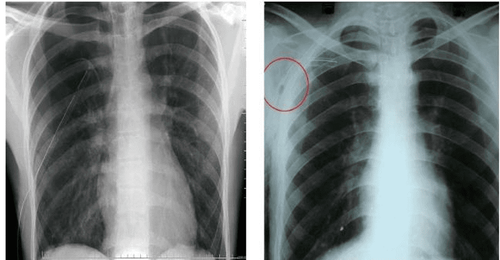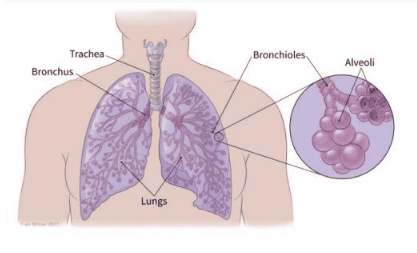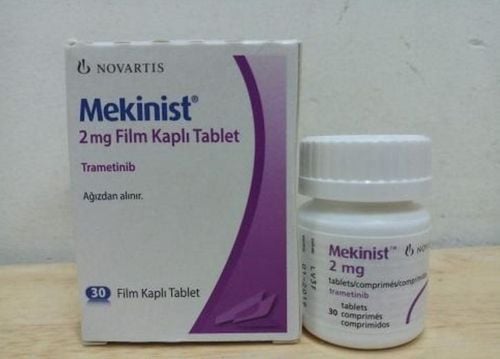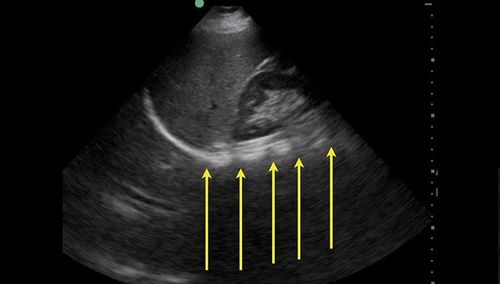This is an automatically translated article.
The article is professionally consulted by Master, Doctor Phan Ngoc Toan - Emergency Medicine Doctor - Emergency Department - Vinmec Danang International Hospital.Lung ultrasound in emergency resuscitation is a technique that can help doctors quickly identify abnormalities occurring in the pleura and lungs such as atelectasis, pneumothorax, pleural effusion....
Critical Care UltraSonography (CCUS) is increasingly being used by clinicians in critically ill patients, and is most commonly used in the emergency department. and the intensive care unit. It can also be used in operating rooms and postoperative care units when evaluating critically ill patients in the hospital.
1. What does a lung ultrasound help diagnose?
Thoracic/pulmonary echocardiography (TUS/LUS: lungs and pleura), is a key component of CCUS and may not include echocardiography. In critically ill patients, TUS can be used to evaluate patients with respiratory failure, cardiogenic pulmonary edema, pleural effusion, and pneumothorax.Approach protocols for the assessment of acute respiratory failure recommend examination of well-defined areas on both sides of the chest (BLUE protocol - Basic Lung Ultrasound Examination). Based on the ultrasound results obtained from these checkpoints, the cause of respiratory failure can be determined in most cases.
This protocol is distinguished by its simplicity and ease of use but other protocols exist without any research proving the superiority of one over the other.
Besides the above abnormalities, lung ultrasound can diagnose other pleural abnormalities, rib fractures...
2. Terminology used in lung ultrasound
“lung sliding” sign “lung pulsing” sign “lung point” sign A-line: normal lung parenchyma, pseudo-pneumatic image B-line: fluid/ alveoli, interstitial space3. Technical
Identify four anatomical points on each chest (there will be a total of 8 points with both lungs).Point 1: anterior superior thoracic wall, the 2nd intercostal space intersects the midclavicular line. Point 2: anterior axillary line, 5th intercostal space (line connecting 2 nipples). This examines the middle lobe on the right side. Point 3: mid-axillary line at diaphragm level. Point 4: is the PLAPS (alveolar or pleural syndrome) point immediately following point 3. Push the transducer as far back as possible (into the bed) while holding the transducer perpendicular to the skin.
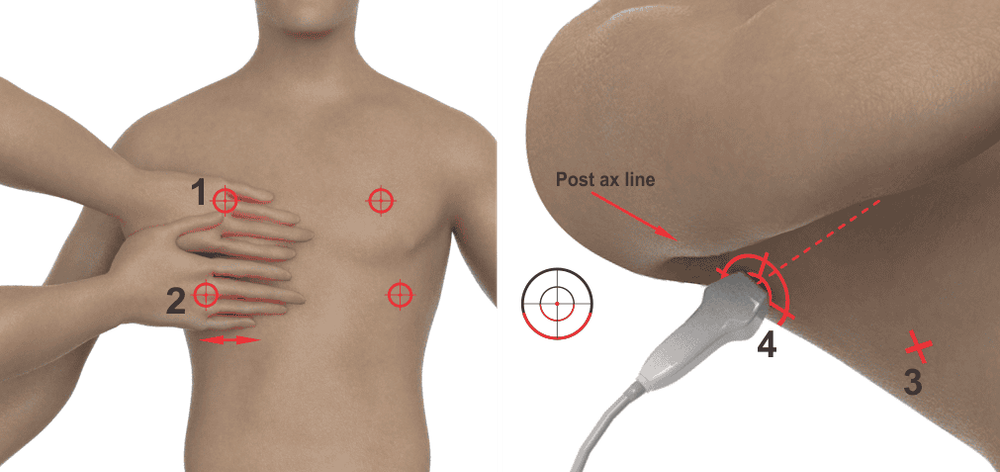
Vùng khảo sát trong siêu âm phổi theo BLUE protocol
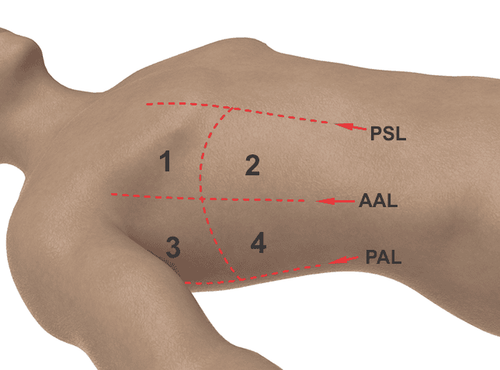
Vùng khảo sát trong siêu âm phổi theo phương pháp Volpicelli
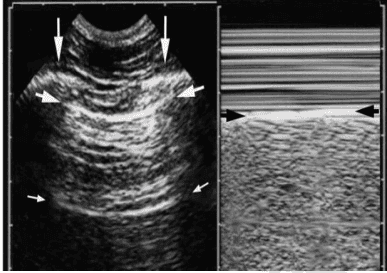
a-line
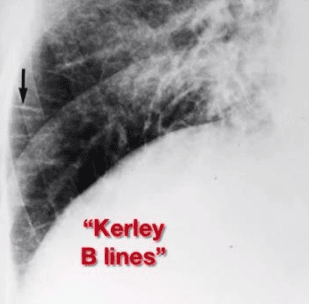
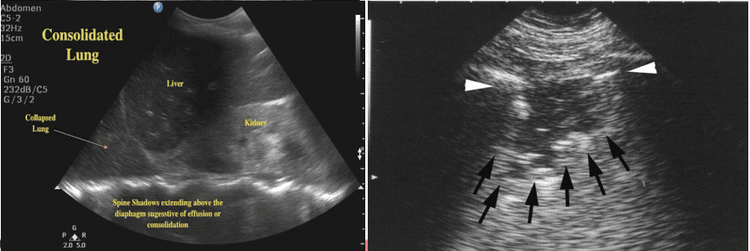
C-profile trong đông đặc phổi
4. Evaluation of results
A profile: A-lines(+) ; lung sliding (+) A' profile: A-lines(+); lung sliding (-) B profile: B-lines in all windows; lung sliding (+) B' profile: B-lines in all windows; lung sliding (-) A/B profile: alternating B-lines with normal lung areas C profile: PLAPS (PosteroLateral Alveolar and/or Pleural Syndrome) (+): consolidation ± overflow Based on the results obtained, applying the BLUE protocol, the clinician can diagnose and prescribe treatment in time.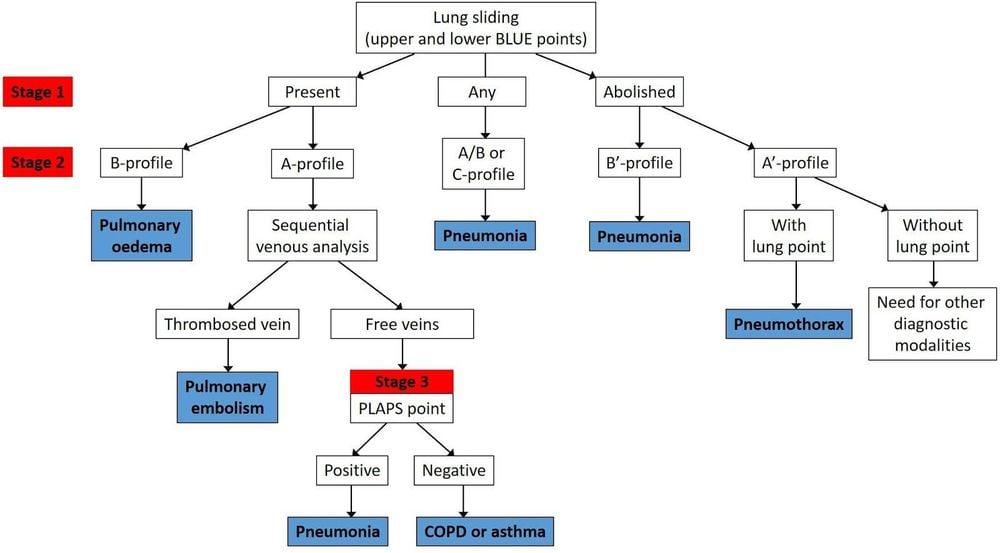
| Nghe phổi | X quang phổi | Siêu âm phổi | |
| Tràn dịch màng phổi | |||
| Độ nhạy | 42 | 39 | 92 |
| Độ đặc hiệu | 90 | 85 | 93 |
| Độ chính xác | 61 | 47 | 93 |
| Đông đặc phế nang | |||
| Độ nhạy | 8 | 68 | 93 |
| Độ đặc hiệu | 100 | 95 | 100 |
| Độ chính xác | 36 | 75 | 97 |
| Hội chứng Kẽ - Phế nang | |||
| Độ nhạy | 34 | 60 | 98 |
| Độ đặc hiệu | 90 | 100 | 88 |
| Độ chính xác | 55 | 72 | 95 |
Currently, lung cancer screening is the most effective measure for you to detect and promptly treat lung cancer, protect your health and life. Currently, Vinmec International General Hospital has a lung cancer screening package with many outstanding advantages such as: A team of highly qualified and experienced doctors; Having a full range of specialized facilities to diagnose the disease and stage it before treatment: Endoscopy, CT scan, PET-CT scan, MRI, histopathological diagnosis, genetic - cytological testing... Having a full range of main cancer treatment methods: surgery, radiation therapy, chemotherapy, stem cell transplant... will help customers effectively screen the disease and have timely treatment if detected. sick.
To register for examination and treatment at Vinmec International General Hospital, you can contact Vinmec Health System nationwide, or register online HERE
SEE MORE
Malignant pleural effusion what? Symptoms and treatment of chronic obstructive pulmonary disease Tests to help detect chronic obstructive pulmonary disease





